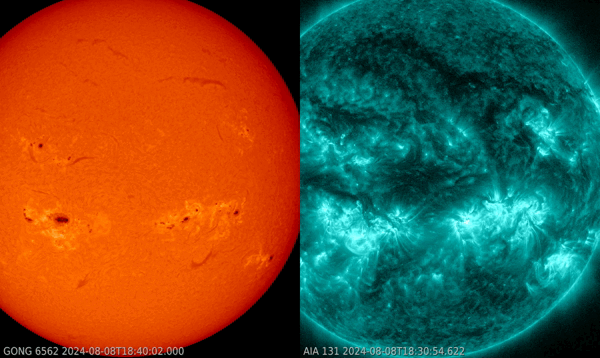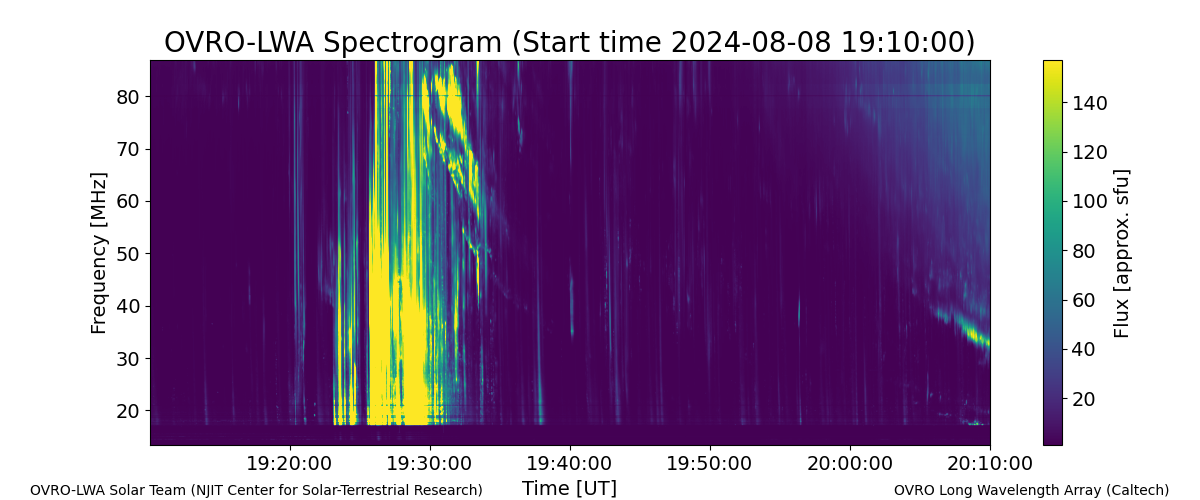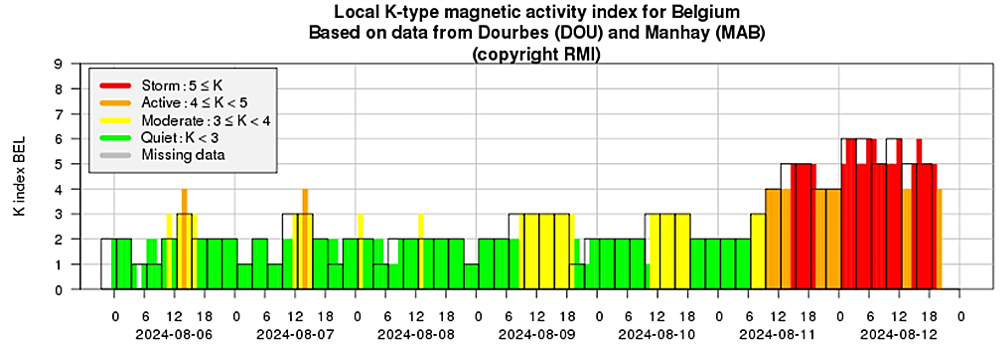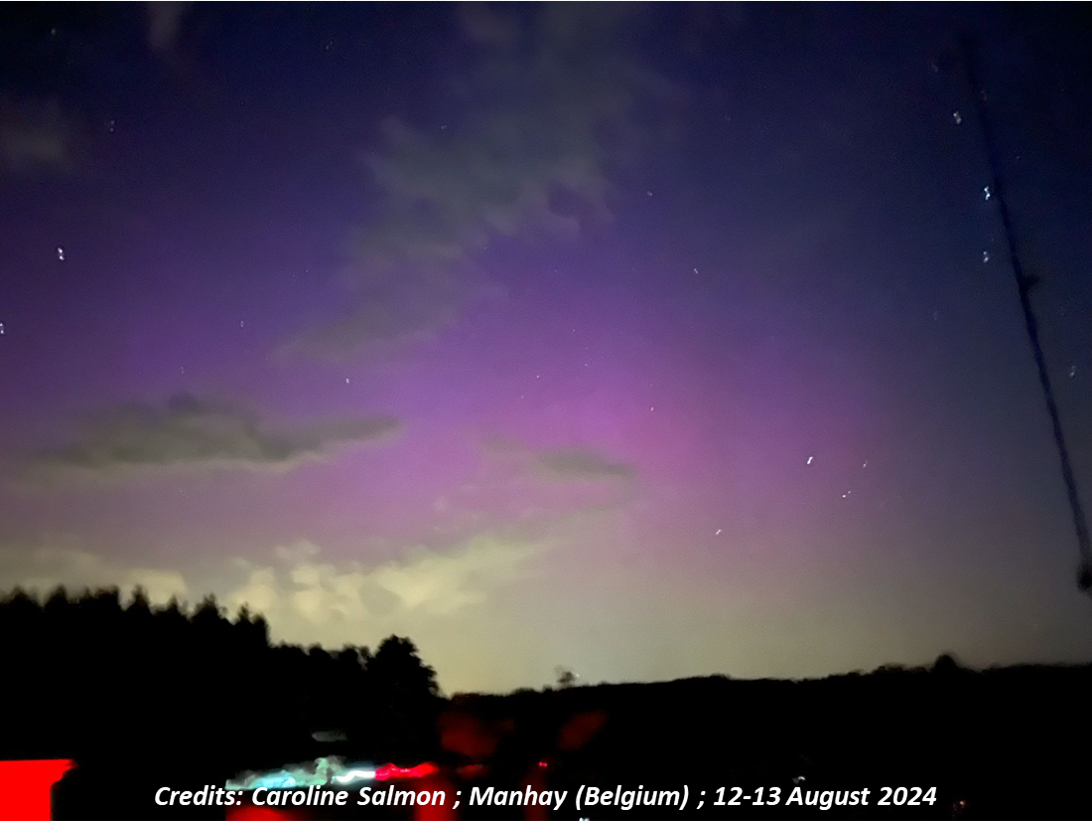NOAA 3777 produced an X1.3 flare on 8 August peaking at 19:35 UTC (GOES). The imagery underneath shows the flare in H-alpha (GONG ; left) and in extreme ultraviolet (SDO/AIA 131 ; right). The proton flux (GOES) is still at background levels, but this may still change in the coming hours. Further strong flaring from this or any of the other complex sunspot groups currently on the solar disk (NOAA 3780, NOAA 3781) remains possible during the next few days.

Solar Demon indicates some coronal dimming and a coronal wave in SDO/AIA imagery, hinting at a coronal mass ejection (CME). The radio spectrogram by Owens Valley (OVSE ; underneath) shows Type II and Type III radio bursts, the former again suggesting that this flare might be associated with a CME. Standing-by for coronagraphic imagery and the analysis by the SIDC forecaster if there's an earth-directed component.

Space weather effects from the x-ray flares were limited to some minor disturbances of HF Com on the Earth's dayside, so mainly over the United States and Canada, the East pacific and Hawaii, and the Caribbean (DRAP ; map underneath). An advisory to the civil aviation for disturbed HF Com (High Frequency Communications) from the solar flare has been sent by PECASUS. Some magnetic observatories (Intermagnet (BGS)) reported a solar flare effect (SFE), i.e. one or more components of the magnetic field strength showing a spike around the time of the flare's peak due to ionospheric enhancement by the flare's x-ray and (E)UV radiation (also known as a "magnetic crochet"). The strength of the SFE varied between a few to around 10 nT. For comparison, the strongest flare so far this solar cycle (X8.7 on 14 May 2024) generated an SFE of 20-30 nT.

UPDATES
Update 9 August at 10:45UTC - Associated with the X1 flare, a halo CME was observed in SOHO/LASCO C2 coronagraphic images starting at 19:48UTC (CACTus). The bulk of the CME is directed southward of the Sun-Earth line. The CME is expected to arrive early on 11 August, most likely resulting in a minor to moderate geomagnetic storm. It is very unlikely that polar lights will be observed from Belgium due to this storm. The proton flux remained at background levels. Further strong flaring from NOAA 3777 or any other of the complex active regions currently on the solar disk remains possible during the next few days. The clip underneath shows LASCO C3 base difference images, i.e. the first image is subtracted from all the following images. There's a small data gap on 9 August between 02:30 and 04:43UTC.

Update 12 August at 20:45UTC - Over the past 24 hours, the geomagnetic field was under the influence of one or more interplanetary CMEs, with the ICME related to the X1.3 flare most likely having the most impact. The ICME structure was quite slowly moving and had a speed between 470 and 520 km/s (DSCOVR), explaining its somewhat later than anticipated arrival. Except for a one-hour interval centered around 07:00 UTC today, the Bz value has been negative since about 01:00 UTC, ranging between -10 and -20 nT. The combination of a slow moving ICME with a moderately strong, long-lasting negative Bz resulted in a moderate (K_BEL=6) to severe (Kp=8o) geomagnetic storm. Dst reached preliminary -203 nT around 17UTC, making this one of the stronger storms so far solar cycle (SC25). Polar lights have been observed/photographed throughout Europe such as in the UK, the Netherlands, Belgium, Switzerland and Slovenia, while in the United States as far south as Texas and New Mexico (Spaceweather.com). Bz is gradually returning to less negative values, which means that the geomagnetic storm most likely will subside in the coming 6-12 hours.







